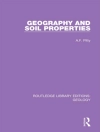This book highlights the concepts and assessment methods of Ecological Footprints. Ecological footprint is defined as, ”a measure of how much area of biologically productive land and water an individual, population or activity requires to produce all the resources it consumes and to absorb the waste it generates, using prevailing technology and resource management practices”. Developed in 1992 by William Rees, it was the first footprint developed followed by other footprints such as Carbon, Water and Energy. Assessment of Ecological footprints strive for comparing consumption footprint to biological capacity. This book presents five interesting chapters pertaining to the assessment of Ecological Footprints.
Tabela de Conteúdo
Ecological Footprint of the life cycle of buildings.- Ecological Footprint Assessment and Its Reduction for Packaging Industry.- Ascertainment of ecological footprint and environmental Kuznets in China.- Development of Renewable Energies and its Consequences on the Ecological Footprint.- Pakistan Ecological Footprint and Major Driving Forces, could Foreign Direct Investment and agriculture be among.
Sobre o autor
Dr. Subramanian Senthilkannan Muthu currently works for Sg T Group as Head of Sustainability, and is based out of Hong Kong. He earned his Ph D from The Hong Kong Polytechnic University, and is a renowned expert in the areas of Environmental Sustainability in Textiles & Clothing Supply Chain, Product Life Cycle Assessment (LCA), Ecological Footprint and Product Carbon Footprint Assessment (PCF) in various industrial sectors. He has five years of industrial experience in textile manufacturing, research and development and textile testing and over a decade’s of experience in life cycle assessment (LCA), carbon and ecological footprints assessment of various consumer products. He has published more than 100 research publications, written numerous book chapters and authored/edited over 95 books in the areas of Carbon Footprint, Recycling, Environmental Assessment and Environmental Sustainability.












